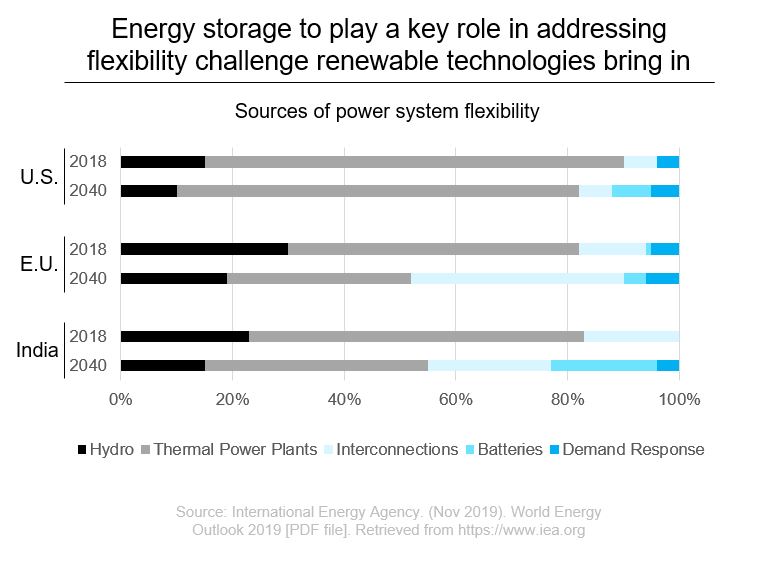Energy IQ: Five insights into the future of energy for utility professionals – Part II
By Aytek Yuksel, Content Marketing Leader - Power Systems

The International Energy Agency’s annual World Energy Outlook aims to deepen our understanding of the future of energy. With this two-part series blog post, you can digest the insights most relevant to utility professionals when it comes to the future of energy. Part I of this blog post was themed “financial insights,” and Part II builds upon that theme with three additional insights.
No. #3: Demand for power infrastructure flexibility grows faster than the demand for electricity
Renewable technologies bring astonishing benefits in terms of zero carbon emissions, but also introduce the challenge of flexibility . The continually increasing share of renewables in our energy infrastructure translates into an increasing share of variable electricity generation. Meanwhile, consumers are increasingly using electricity for cooling and to fuel their cars. This changes when we need electricity and the amount we need, eventually shifting the electricity demand profile. A combination of these two results in an increased need for power system flexibility.
While traditional power plants and interconnections will continue to be key levers to deliver flexibility, energy Storage batteries are projected to be the rising star in solving this flexibility challenge, thanks to advancements in battery technologies and decreasing costs. It is estimated that there will be a 40-fold increase in in battery storage capacity by 2040, increasing faster than almost every other mainstream technology.
No. #4: Gas plays multiple roles in energy transition
Offering flexibility is one of the key roles natural gas plays in energy transition. Gas-fired plants are more capable of scaling up output when there is need for more energy, whether it is driven by heating demands during winter or cooling during summer.
Displacing high carbon fuels is the other key role gas plays in energy transition. The environmental benefits combined with the low supply cost of gas has fueled a worldwide coal-to-gas switch. It is estimated this switching has avoided around 500 million tons of CO2 emissions since 2010. This reduced carbon footprint was accomplished since natural gas produces less than half of the carbon coal produces when used to produce electricity.
Lastly, de-carbonized gases could take the environmental benefits to the next stage while taking full advantage of existing natural gas grids, which bring more energy to consumers than electricity grids in many countries. Low-carbon hydrogen and biomethane are considered to be the two main candidates to fill our existing gas grids if the affordability challenge is resolved.
No. #5: Regulations continue to be the key driver of the utility industry
Regulations and incentives have a prominent role in energy markets, and utility markets are no exception. Both the century old fossil fuel consumption and the newer renewable technologies receive subsidies. When it comes to renewable technologies, you can see how these subsidies and initial policy decisions are now resulting in large-scale deployments around the world. Renewables are one example, and historically over 90% of investments within the power sector is estimated to be linked to regulations and policies.
The emerging need for a new frontier of regulations in the utility industry is fueled by the advancements in connectivity, analytics and energy storage. It is expected the new regulations will create a more efficient power sector, and help consumers and utilities to maximize the value of their investments.
Utility professionals are future shapers when it comes to energy markets. Decisions utility professionals make today impact the future of energy; therefore, it is crucial for utility professionals to stay up to date with insights and trends relevant to their work.
Sign up below for Energy IQ to periodically receive relevant insights and trends about energy and electricity sectors. To learn more about distributed generation solutions Cummins Inc. offers, visit our webpage.
Think your friends and colleagues would like this content? Share on LinkedIn and Facebook.
Author Profiles

Aytek Yuksel, Content Marketing Leader - Power Systems
Aytek is a marketing leader at Cummins, focusing on technology and thought leadership. Since joining in 2008, he has held various marketing roles and now shares insights on markets, technologies, and energy transition. Aytek lives in Minneapolis with his wife and two kids.
Related Tags